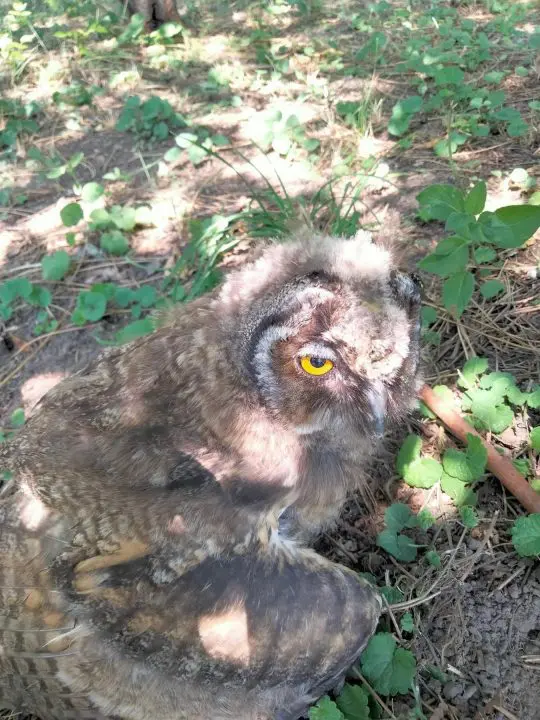The Alarming Impact of Extreme Heat on Wildlife in Dnipropetrovsk
In the heart of Dnipropetrovsk, the Oles Honchar Dnipro National University’s botanical garden has become a battleground against the staggering effects of extreme heat. The garden’s director, Anatoliy Kabara, recently shared a striking image on social media—a fluffy owl desperately seeking shelter from the blazing sun beneath a tree’s shade. This poignant moment reveals not just an image, but a growing crisis that speaks to the challenges faced by local wildlife.
The Rising Temperatures: A Cause for Concern
As we witness temperatures soaring to an alarming 45°C, public health officials are raising the alarm. A Level III (red) danger alert has been issued, indicating substantial risks not just for human populations, but for the animals that share our environment. The psychological and physical strain on wildlife during these heat waves can be profound, leading to distress, dehydration, and even death. Data from recent studies show that a significant percentage of animal species are at risk, with up to 30% showing signs of heat-related stress during extreme weather events.
Practical Tips for Residents and Animal Lovers
In these challenging conditions, how can we protect both ourselves and our fellow inhabitants of this planet? Here are some actionable steps:
- Stay Hydrated: Ensure that you and your pets have constant access to fresh water. Dehydration can set in quickly, especially in sweltering heat.
- Avoid Peak Sun Hours: Plan outdoor activities for early mornings or late evenings to minimize exposure to the harshest sun.
- Provide Shade: Create shaded areas in your garden for animals to seek refuge, especially for pets and local wildlife.
- Observe Wildlife: Take note of any unusual behavior in animals. If you see struggling wildlife, consider contacting local wildlife rescue organizations.
The Ripple Effect on Ecosystems
These extreme weather patterns do not only affect individual species; they disrupt entire ecosystems. When temperatures rise, food sources for many animals may dwindle. For instance, localized studies have indicated a drop in insect populations during extreme heat, which in turn affects birds and other animals that rely on these insects for nourishment. Understanding this interconnectedness is crucial. As one aspect of an ecosystem is strained, it creates a domino effect that can threaten biodiversity.
Call to Action for Awareness and Advocacy
The current crisis serves as a stark reminder of the pressing need for awareness around climate change. It is not just a problem for distant lands or future generations; it’s a challenge we face right here, right now. Local wildlife, like our beloved owls, depend on us to act. Advocacy for climate-conscious policies can lead to more significant changes that protect our natural habitats. According to the Intergovernmental Panel on Climate Change, urgent action can mitigate the effects of climate change by reducing greenhouse gas emissions.
Let us not wait until we see more owls in distress. Together, we can take deliberate steps to safeguard our environment, ensuring a healthier ecosystem for all living beings. Whether it’s small actions in our daily routines or supporting broader initiatives, every bit counts. Let’s protect our shared home before it becomes too late.





